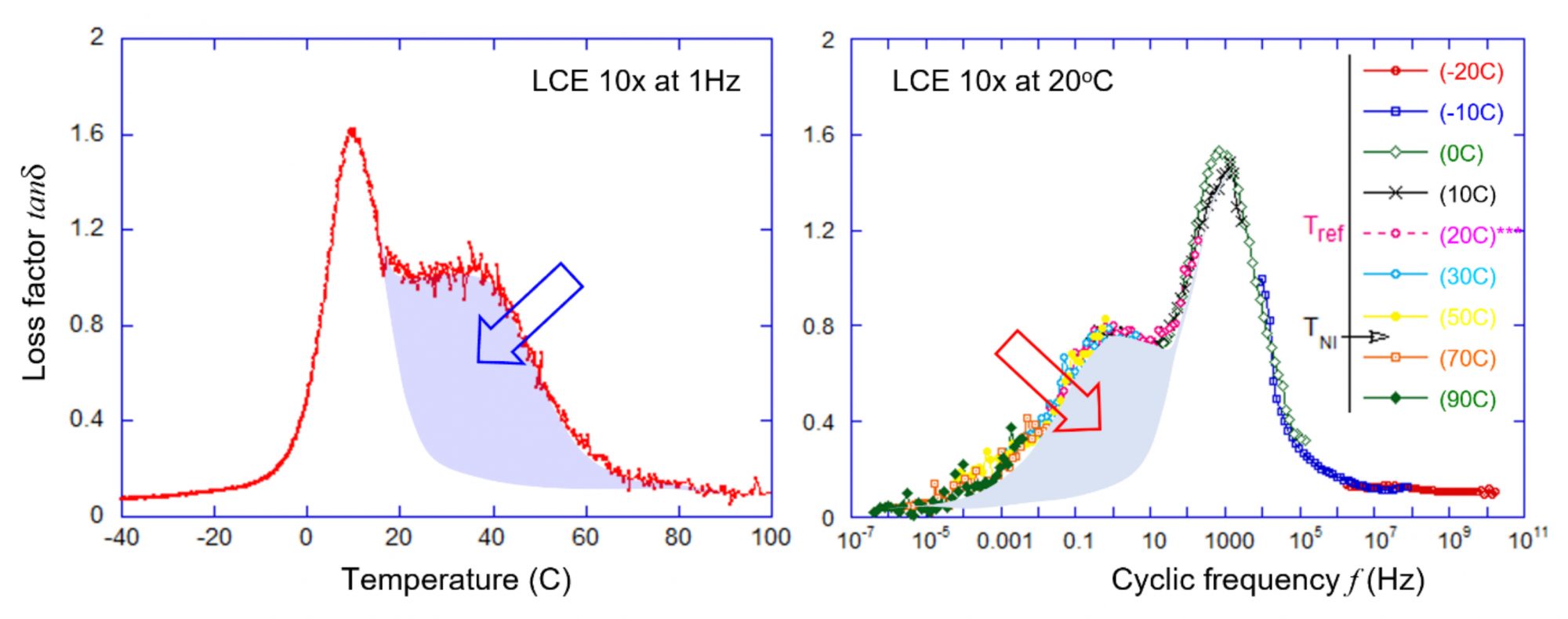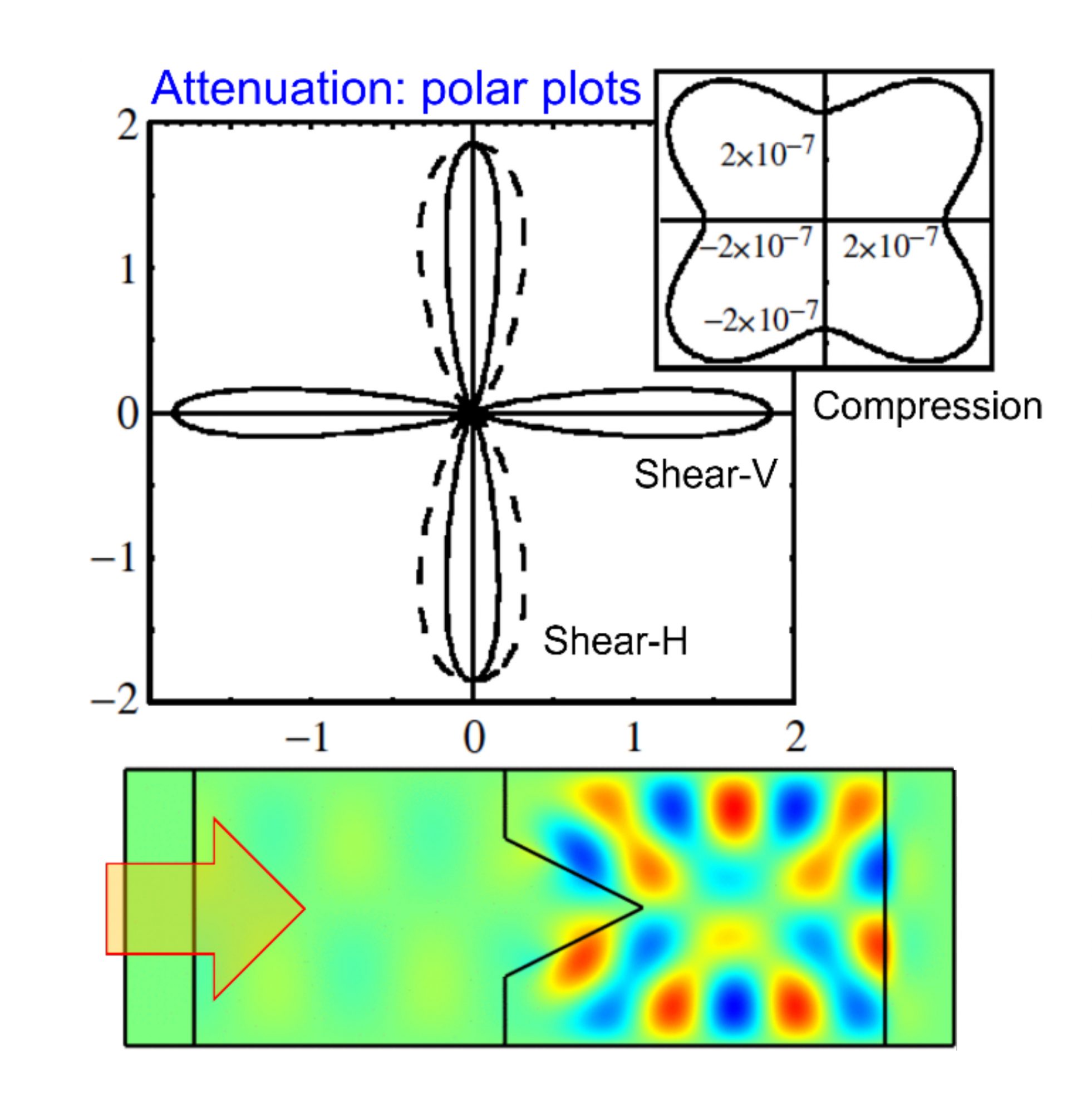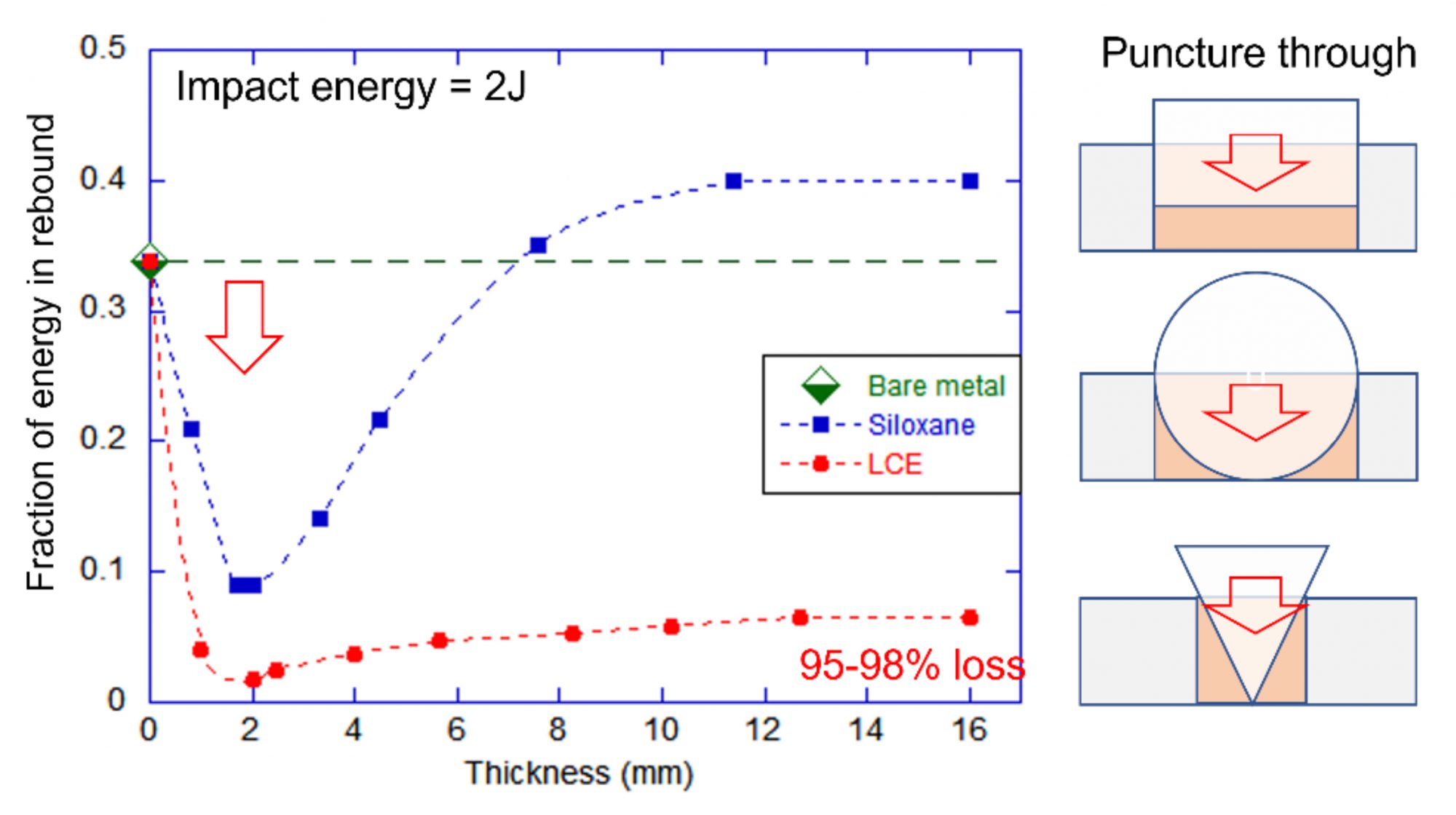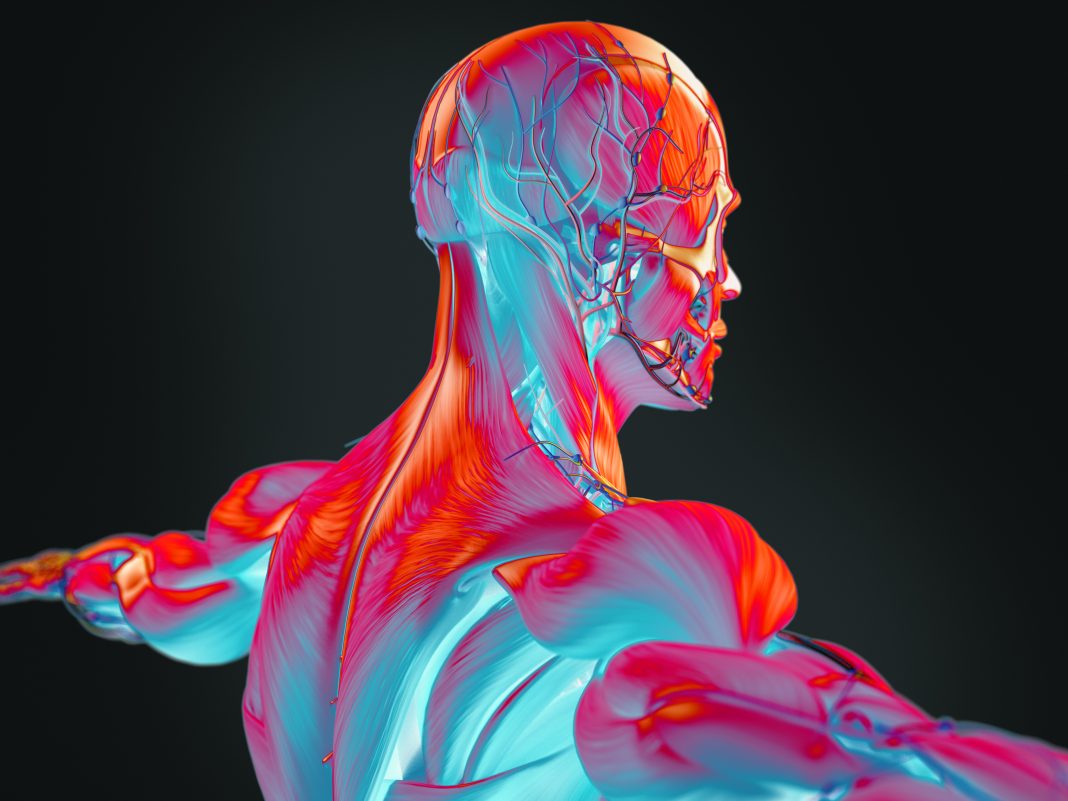Liquid Crystal Elastomers (LCE), invented over 30 years ago, have been considered a highly promising material system for soft actuators and artificial muscles ever since
There is considerable interest in developing thin conformal coatings of materials that can efficiently dissipate mechanical energy, thus suppressing vibration and noise and protecting from impacts. Traditionally, to create vibration-damping materials one exploits the loss aspect of the viscoelastic response when the energy dissipates as heat in either free or constrained layer configurations.
Much is written about various aspects of Liquid Crystal Elastomers actuation, from smart textiles to soft robotics. The second unique aspect of these remarkable materials has received less attention so far, yet application of vibration damping and impact protection are more obvious and the industry is more ready to accept this innovation.

Origin of anomalous dissipation
The origin of the anomalous dissipation of vibration energy in Liquid Crystal Elastomers medium is due to the independent degree of freedom in their microstructure: the nematic orientational order can have its anisotropy axis (called the ‘director’) rotate inside the elastic matrix (unlike the axis of anisotropic solids, which is rigidly tied-in to their lattice). This independent rotation causes an additional dissipation due to the rotational viscosity, which comes on top of all the usual viscoelastic loss mechanisms in an elastomer network. This is expressed in the twin graphic illustration of the ‘loss factor’ tan, which is the key characteristics that measure mechanical dissipation: One graph shows it as a function of temperature at a constant frequency, the other – as a function of frequency at a constant reference temperature (the so-called Master Curve). Both graphs have the prominent loss peak at the glass transition, which is present in all polymers, and the added region of anomalous dissipation due to the nematic ordering in LCE.
Based on this underlying physical effect, our research into materials chemistry has probed how to increase the damping even higher, and the temperature range of its action even wider – by modifying the molecular structure of polymer chains constituting the LCE to push the glass transition to lower temperatures, and the isotropic transition to even higher temperatures.
Propagation of acoustic waves
Our studies of propagation of acoustic waves through such an unusual medium has shown that compression (longitudinal) waves pass through with almost no loss, as in all dense materials, but shear waves have enormous damping and cannot propagate at all in certain polarisations. In a typical polydomain (i.e. not particularly aligned) LCE material, all polarisations would be ‘consumed’ in this way. An interesting aspect of this phenomenon is the acoustic wave propagation past a ‘defect’ or an imperfection: as an illustrations shows, this mixes up shear and compression waves and leads to a strong net attenuation with almost no dependence on wave polarisation.

The impact damping
The impact damping is a separate topic, no less important practically – but very different scientifically, because in the impact, a broad range of frequencies is excited, and also because the dissipation of impact energy is only one aspect of the problem. The actual ‘damage’ in impact, be it to the target or to the impactor, is achieved by the exerted force, which is related to the transfer of momentum in the process.
The illustration graphic below compares protective damping pads made of an ordinary silicone elastomer and of an LCE and presents the fraction of energy in the rebound in a simple ‘drop test’ when a steel ball is dropped on a granite plate. The natural restitution of steel on granite gives the baseline of ca.35% rebound energy in this setting. Curiously, using a thick protective rubber pad increases the rebound to over 40% due to the elastic response – but the thick LCE pad only has ca.5% rebound energy. Importantly, we have identified the optimal thickness of the protective pad, the smallest thickness before the puncture occurs. The graph presents the results for a spherical impactor, where for the comparable elastic strength both pads have the optimal thickness of just below 2mm – at which silicone has ca.10% rebound energy, compared with less than 2% for the LCE damping pad. Other impactor shapes would have a different propensity to puncture through, and thus a different optimal thickness of the damping pad.
For the protection of the target in the same impact, the thicker the damping pad the less force it transmits through – but using the 2mm pads optimised for the least impactor rebound, we find that the force pulse of ca.7kN over 0.25ms for the bare metal impact is reduced to ca. 2kN over 0.8ms for the silicone pad, compared to just 1.2kN over 0.95ms force pulse transmitted into the target with the LCE protective pad.

The University of Cambridge, through its ERC-funded APRA project, and the technology spinoff Cambridge Smart Plastics are now jointly developing this new concept of impact and vibration damping, bridging across from academic research to marketable technology.
We are tuning the material design for maximal loss, develop optimised shapes of damping elements tuned for the required conditions, and establishing contacts with major anti- vibration equipment manufacturers to insert this LCE technology into the mainstream assembly process. This offers radically new ideas to industrial product designers, who are only now beginning to realise the opportunities from Liquid Crystal Elastomers.

This work is licensed under Creative Commons Attribution-NonCommercial-NoDerivatives 4.0 International.


